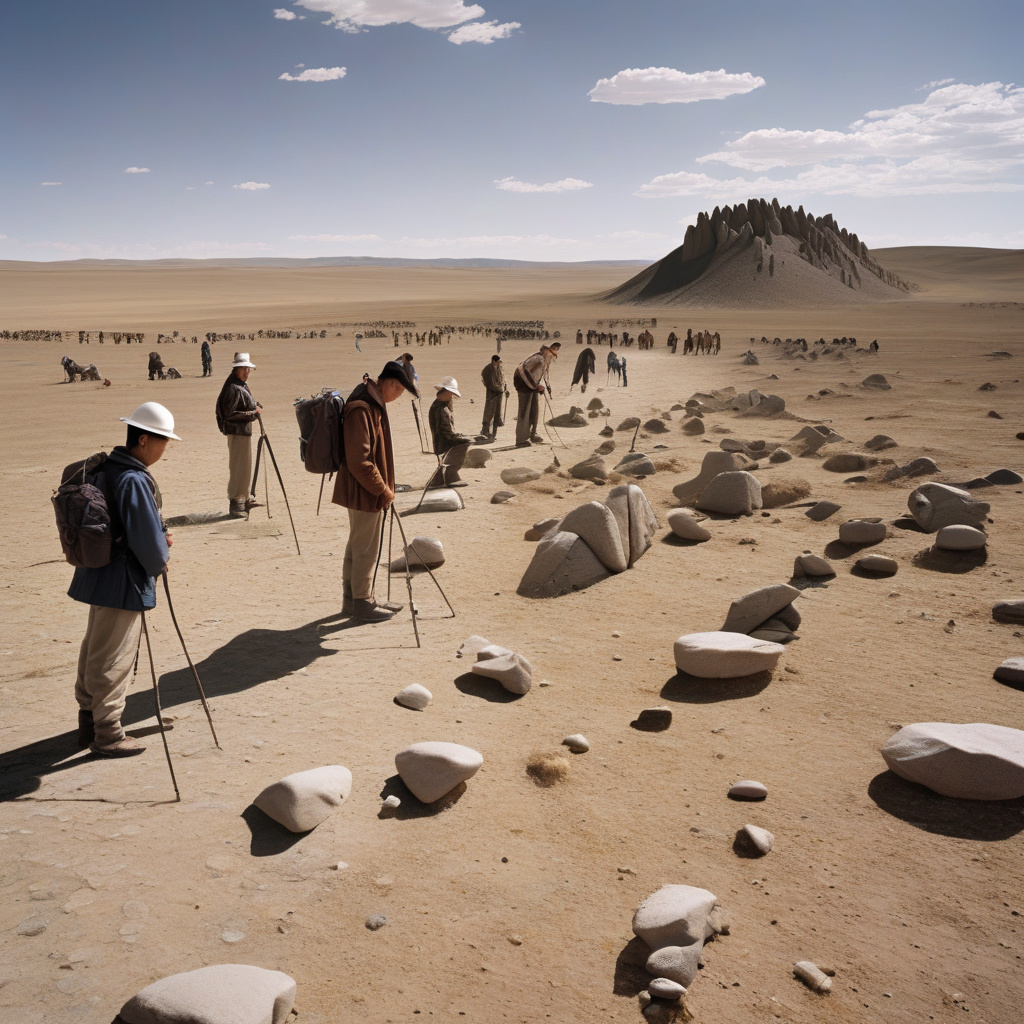The Multi-Functional Marvel: Unveiling the Secrets of Mongolia’s 200-Mile-Long Gobi Wall
A new study investigated the Gobi Wall, the least understood section of the Medieval Wall that stretches across Mongolia. While traditionally believed to serve as a defensive fortification, researchers have unearthed evidence suggesting a far more diverse and intriguing purpose behind its existence. The findings challenge conventional notions and shed light on the remarkable ingenuity of ancient civilizations.
Built over centuries by various nomadic empires, the Gobi Wall stands as a testament to human engineering and perseverance. Spanning an impressive 200 miles across the vast Mongolian landscape, this architectural marvel has long captivated historians and archaeologists alike. However, its true function remained shrouded in mystery until recent research efforts delved into its enigmatic past.
Contrary to popular belief, the study reveals that the Gobi Wall was not solely constructed for military defense. While it undoubtedly served as a barrier against external threats, its strategic placement and unique features hint at a more multifaceted role. Analysis of the wall’s design and surrounding artifacts indicates a sophisticated system that integrated elements of trade, communication, and possibly even spiritual significance.
One of the most intriguing discoveries pertains to the presence of watchtowers along the wall. These structures, strategically positioned at regular intervals, suggest a sophisticated communication network that enabled rapid signaling across vast distances. Such a system would have been invaluable for coordinating movements, issuing warnings, and facilitating trade caravans along the ancient Silk Road.
Moreover, the Gobi Wall’s proximity to key trade routes indicates its involvement in facilitating commercial activities. Traders passing through the region would have relied on its protection and guidance, turning the wall into a bustling hub of economic exchange. The integration of defense, communication, and commerce highlights the ingenuity of its builders in creating a structure that transcended traditional boundaries.
Beyond its practical functions, the Gobi Wall also appears to have held symbolic and cultural significance for the civilizations that inhabited the region. Artifacts uncovered near the wall suggest rituals and ceremonies that may have been conducted to honor its construction and maintenance. Such practices not only reinforced social cohesion but also imbued the wall with a spiritual aura, elevating it from a mere structure to a revered monument.
The study’s findings underscore the importance of reevaluating historical sites with a fresh perspective. By moving beyond preconceived notions, researchers can uncover new layers of complexity and richness in ancient civilizations’ achievements. The Gobi Wall, once thought to be a simple defensive barrier, now emerges as a dynamic and versatile creation that played a pivotal role in the cultural and economic life of its time.
As we continue to unravel the mysteries of the past, the Gobi Wall stands as a reminder of the boundless creativity and resourcefulness of our ancestors. Its legacy endures not only in the stones that form its structure but also in the stories it holds within its ancient embrace.
#Mongolia, #GobiWall, #AncientCivilizations, #ArchaeologicalDiscoveries, #CulturalHeritage












